Retaining walls are a great solution for leveling out flat areas when you're trying to landscape a hill. However, if you're building one yourself, you may be wondering how far apart the posts should be. We've done the research and have the best answer for you.
Retaining wall posts should be at least three feet apart. The distance can be slightly longer or shorter if it works better with your measurements. However, you shouldn't go more than seven feet apart to make sure your wall is sturdy enough.
Continue reading for a deep dive into building retaining walls, including the ideal depth for retaining wall posts and the best materials to use. We'll also discuss the maximum height of retaining walls and how you should handle drainage issues.
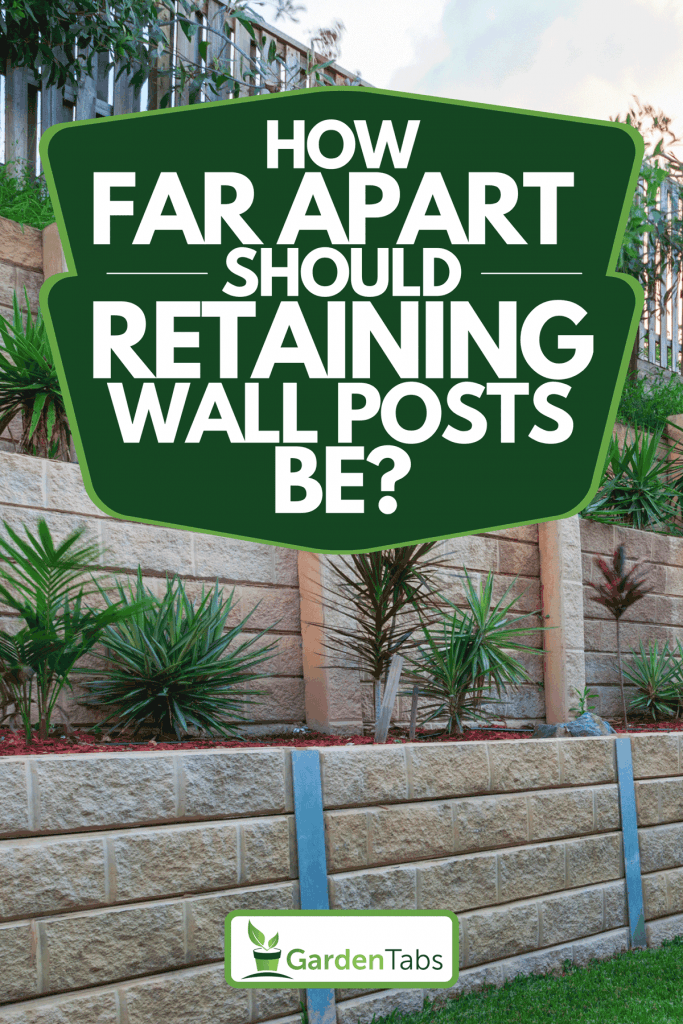
Distance Between Retaining Wall Posts
When you're building a retaining wall, you'll want to measure the total distance of your wall and then calculate the number of posts you'll need. If your distance isn't evenly divided by three, you can slightly adjust the distance between your retaining wall posts.
Though you can adjust the distance between your retaining wall posts, make sure you don't set them too far apart. In general, the heavier load they'll be bearing, the closer they need to be to each other. For a low, decorative wall, you can go farther apart than for a high wall that will be bearing a lot of weight.

How Deep Do Posts Need to Be for Retaining Walls?
When you place your retaining wall posts, make sure you dig down at least half the height of your retaining wall plus four inches. This will ensure your posts are deep enough to provide a solid foundation for your retaining wall.
You could dig down with a manual posthole digger, but renting or buying an auger powerhead will make the job go much faster.
Click here to shop auger powerheads at Amazon.
What Are the Best Materials for a Retaining Wall?
Retaining walls are incredibly versatile. They can be built to almost any height and out of different materials. The best material for you will depend on several factors, including how handy you are and your budget.
Wood
Wood has several benefits for a retaining wall. First, it's fairly easy to work with for a DIYer. A retaining wall made of pressure-treated lumber can last up to 10 to 20 years. Depending on the price of lumber when you buy your wood, it can be relatively inexpensive.
Wood is also versatile as far as designing your wall. It can fit into almost every style of decor. The biggest drawback to using wood for your retaining wall is that it doesn't last as long as most other materials.
A wooden retaining wall will eventually have to be replaced. Another drawback to wood is that it isn't as sturdy as most other materials. It can't withstand the type of loads that stone can.
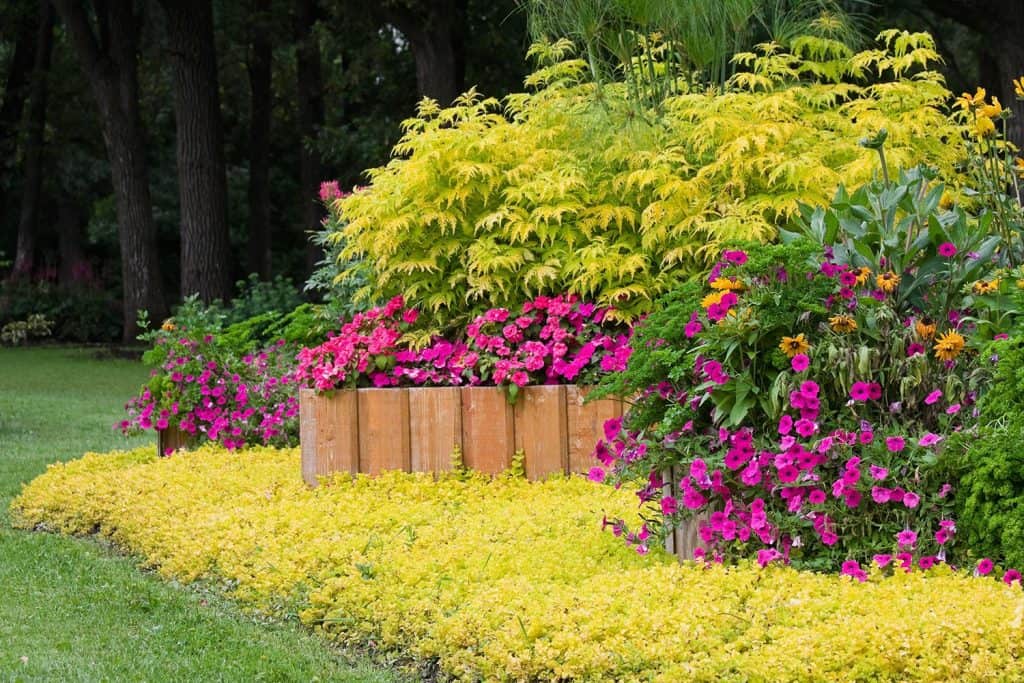
Poured Concrete
A poured concrete wall is the cheapest option for a retaining wall. It's also long-lasting and strong. If you need a high retaining wall that can hold a lot of weight, concrete may be a great option for you. However, concrete retaining walls can have a very stark and industrial look, which may not work with a lot of home styles.
While there are decorative treatment options for concrete finishes, they can add significantly to the price. You'll also need some serious DIY skills and equipment to handle pouring concrete yourself. So it's probably not the best option if you're just planning a weekend project.
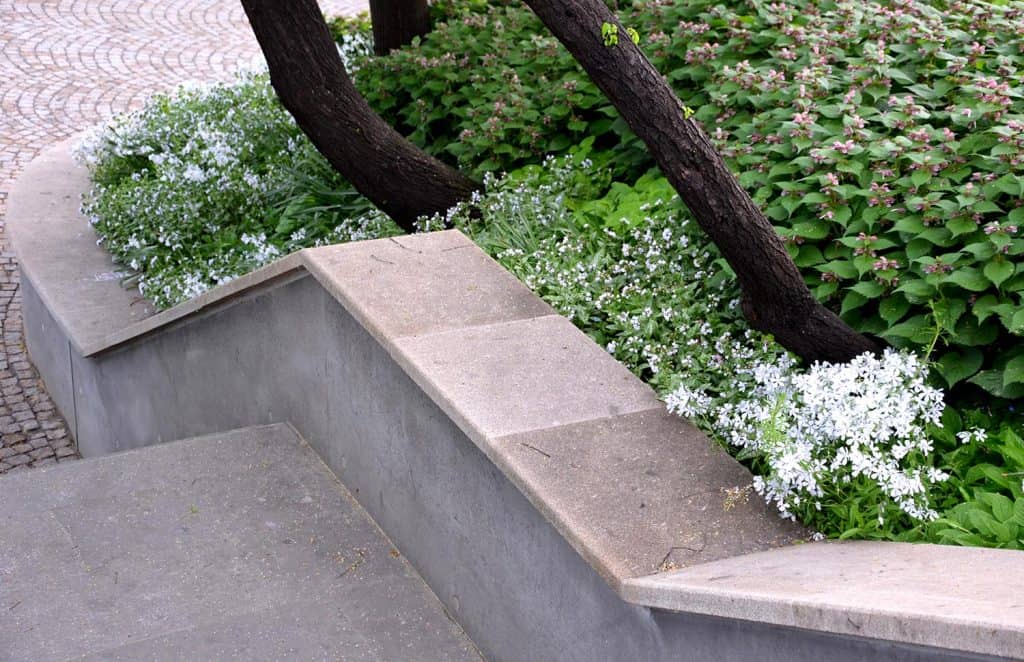
Concrete Blocks
Concrete blocks can be a great option for retaining walls under four feet. They are readily available at home improvement stores and are easy for homeowners to install.
They aren't the cheapest option, but their ease of installation means you won't need heavy-duty equipment to build your wall. In addition, concrete blocks are durable and strong, so you can expect your wall to last a long time.
Bricks
Brick retaining walls have a beautiful, classic look that many homeowners love. Most retaining walls that appear to be brick are made with concrete masonry unit (CMU) blocks with reinforced steel. The brick is then applied to the exposed areas as a veneer. This significantly reduces the cost of a brick retaining wall.
Older brick retaining walls were made with two brick walls that were several inches apart. The cavity between the walls was filled with concrete or grout and steel structural supports. These types of walls can still be built today but are much more expensive.
Click here to check out brick veneers on Amazon.
What Is the Maximum Height of a Retaining Wall?
If you're building a retaining wall yourself, you probably shouldn't go over four feet. You can use interlocking concrete blocks to build a retaining wall up to about four feet before you have to start worrying about adding structural support.
Various factors have an effect on how high you should build a retaining wall, including the type of soil and if you have a footer in place. For heavy loads or walls over four feet, you'll need to consult with an engineer who can give you advice specific to your situation.
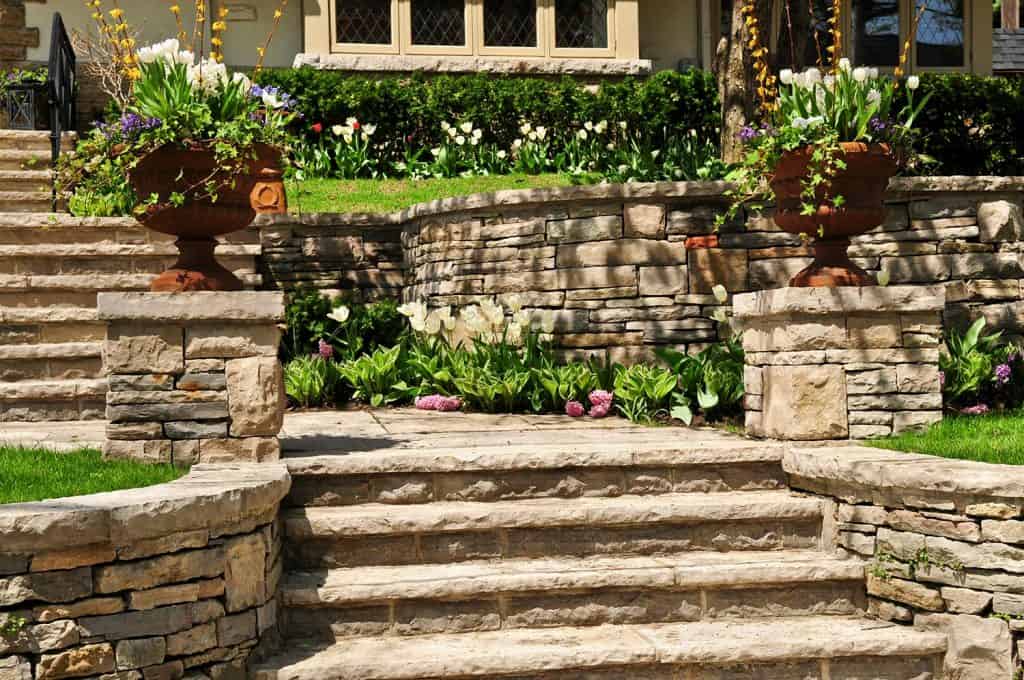
Do Retaining Walls Need Drainage?
Improper drainage can cause your retaining wall to fail. All retaining walls should include some type of drainage. Depending on what your wall is made of, how high it is, and what type of soil you have, you may need to include additional drainage.
Base Layer
The first step to making sure your retaining wall drains correctly is making sure your base is level. If it's not, water may wash away some areas and create an unstable wall. This can lead to your wall collapsing.
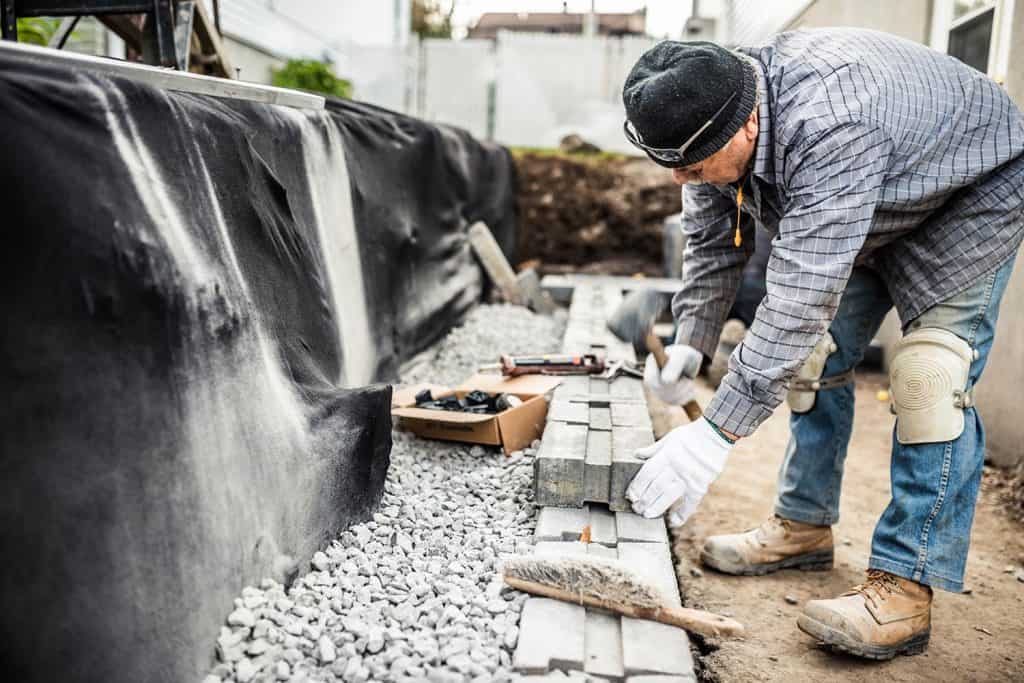
Drainage Stone
All walls need stone behind the wall. Put a six to eight-inch layer of loose rock behind the wall up to six inches below the top of the wall. Loose rock drains water much better than soil. Crushed rock is better for drainage than smooth river rock since it clings to the wall better.
Landscape Fabric
Place landscape fabric between your drainage stone and your soil. This will keep the rocks separate from the soil, which could clog it and prevent it from draining. It will also help stop your soil from escaping from behind the wall.
Click here to shop for landscape fabric on Amazon.
Perforated Drainage Pipe
This is a corrugated tube with holes in it that runs the entire length of your wall. You may not need a drainage pipe, but it's never a bad idea to install one. There are some situations where you will definitely need one. These include:
- Retaining walls made of poured concrete or other materials with no drainage joints
- Retaining walls over four feet high
- Buried water sources or groundwater within 50 feet of your retaining wall
- Your retaining wall is holding poorly draining soil such as clay
- Retaining walls at the bottom of a slope
- Tiered retaining walls
Drainage Hole
Your pipe will need a drainage outlet. You can cut a hole in your retaining wall for the drainage pipe, or you can run the pipe underneath the wall. If you're using segmented blocks, you can also use a universal wall drain to provide an outlet for your drainage pipe.
Click here to shop for perforated drainage pipes on Amazon.
In Closing
A retaining wall can add beauty and value to your home. It can also help you reclaim unusable sections of your yard if you live on a hill. No matter what material you choose for your retaining wall, it's essential you provide a solid foundation by making sure your posts are the right distance apart, buried to the right depth, and that you provide adequate drainage.
If you're planning to build a retaining wall, you may be interested in some of our other articles as well:




